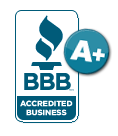Earthen Ponds Frequently Asked Questions
Lake and Pond Management
Ponds and lakes are a valuable natural resource. They add beauty to the landscape, provide recreation and are a habitat for fish and wildlife. A natural body of water is a complex biological, chemical and physical community. The quality of the water determines the health of the entire community and the aquatic organisms living within the system ... from microscopic bacteria to the largest fish. The “engine” that drives everything within a body of water is the presence of oxygen in proper levels. A pond’s condition deteriorates when its bottom environment cannot support aquatic life. The bottom is where the most oxygen is consumed and the farthest from the surface where it is replenished. Without adequate oxygen at the bottom, beneficial bacteria do not break down the organic waste. This results in increased layers of sediment (muck) along the pond bottom. Simply put, without oxygen a pond cannot clean itself.
Three main tools are needed to manage ponds and lakes:
Aeration
Beneficial Bacteria
Weed and Algae Controls
Weed and Algae Identification
Algae
Algae grows in various forms. Filamentous algae is the most common, it grows in strings or mats - often on the surface. Planktonic algae causes green water. It is millions of individual cells that cloud together. Chara is a weed-like form of algae. It grows like a carpet along the bottom of the pond. It has a musky odor and feels gritty. Use Cutrine liquid on filamentous and planktonic, Cutrine granular on chara.
Cattails and Other Emergent Plants
Pondweeds
Elodea
Duckweed & Watermeal
Waterlilies
Eurasian Milfoil
Other Less Common Weeds
Weed and Algae Treatment product overview
Diversified Pond Supplies LLC offers a wide selection of aquatic weed and algae control products along with nearly four decades of experience. Controlling nuisance aquatic plants and/or algae is a problem nearly every pond owner is forced to deal with sooner of later.
There are several ways to go about treating a pond. Ideally you will take some time and understand what is causing the problem. Once you understand what is causing the problem it makes future treatment and control much easier. Following are some ways to improve water quality and control aquatic growth:
Aeration
Utilizing aeration will do several things. First, it maintains higher oxygen levels in the pond particularly near the bottom. This allows organic materials to decompose rather than accumulate. Secondly, aeration will allow natural and ay added bacteria to work faster at digesting the nutrients in the pond. Third, moving water is much healthier than stagnant water. Aeration will prevent stratification of the water creating more uniform water temperatures from top to bottom.
Bacteria
Chemical Control
Aeration, bacteria or chemical use alone will not usually solve the problem. Used in conjunction, however, these products are extremely effective at reducing problems and improving water quality. Please contact us for assistance in determining the best plan of action for your pond.
Proper identification is crucial to the success of any chemical treatment. Many aquatic weeds look very similar but some require totally different products to control them. We have pictures of many popular plants in our Identify Aquatic Weeds & Algae section.
Contact Us
Have questions, comments, or concerns? Contact us or stop in.
15069 Blank Pike,
Wapakoneta, OH 45895
(419) 738-0167
(419) 738-1167
Office hours
Monday 9am - 5pm EST
Tuesday 9am - 5pm EST
Wednesday 9am - 2pm EST
Thursday 9am - 2pm EST
Friday 9am - 5pm EST
Saturday 7:30am - 2 pm EST
Sunday Closed



